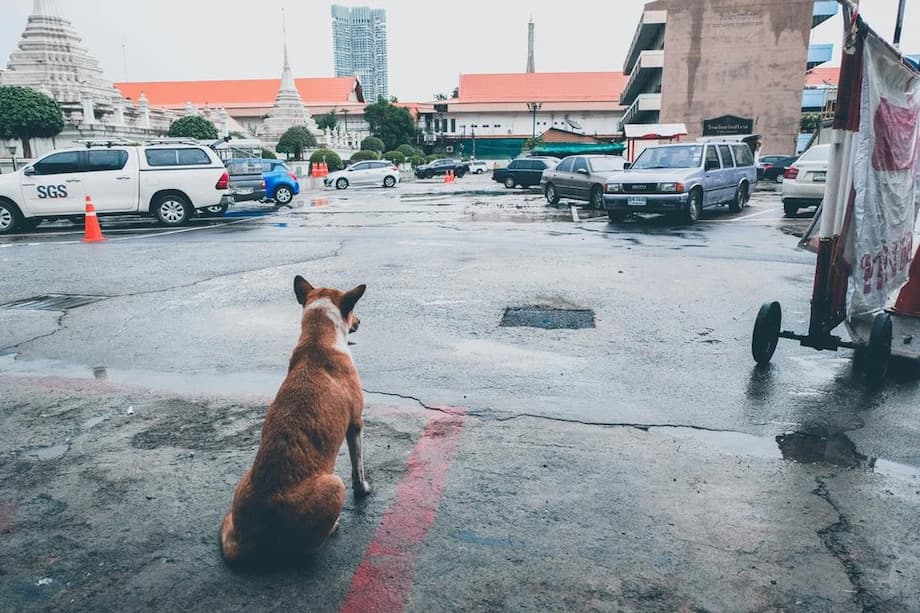Urgent controls after cases confirmed in Nong Bon
Thailand has activated emergency animal health measures in parts of Bangkok and neighboring Samut Prakan after confirmed rabies cases in Nong Bon, Prawet district. The Department of Livestock Development issued an order designating temporary epidemic zones and imposing a 30 day ban on the movement of dogs, cats, cattle, buffalo and other mammals into or out of the affected areas. The order took effect on September 9 and runs through October 8. Health authorities describe the situation as a serious threat to people and animals, and they are urging caution across eastern Bangkok and selected zones of Samut Prakan.
- Urgent controls after cases confirmed in Nong Bon
- Where are the epidemic zones
- What the rules mean for pet owners and animal businesses
- Why rabies is dangerous and how it spreads
- What to do if you are bitten or scratched
- How authorities are responding
- Everyday precautions for residents and travelers
- Longer term strategy to end rabies in Thailand
- What to Know
The designated epidemic zone centers on Nong Bon in Prawet district. It is bordered by Thap Chang to the north, Bang Kaeo to the south, Racha Thewa to the east, and Bang Chak to the west. Officials have also named several surrounding neighborhoods as high risk. These include Dok Mai and Prawet in Prawet district, On Nut and Phatthanakan in Suan Luang district, Thap Chang, Lat Krabang, Bang Na Nuea and Bang Chak. Across the provincial border, Bang Kaeo and Racha Thewa in Samut Prakan are on heightened watch. Residents within a five kilometer radius of the outbreak are asked to be especially careful around stray animals.
The order introduces strict controls on animal movement, reporting, and carcass handling. Owners must report any suspected illness in animals within 12 hours. Carcasses must not be moved and should remain where they are found until veterinary officers arrive. Moving dogs, cats or their carcasses into or out of the declared areas requires written permission from an official veterinarian. Violations can lead to up to two years in prison, fines up to 40,000 baht (about 1,600 US dollars), or both, under Thai animal epidemic law.
In its emergency order, the Department of Livestock Development highlighted that the objective is to halt transmission quickly and protect both people and animals. The agency stressed that control efforts include movement restrictions, active surveillance, and vaccination drives in and around the outbreak zone.
Where are the epidemic zones
Authorities have focused their response on eastern Bangkok and adjacent districts of Samut Prakan linked by daily movement of people and pets. Nong Bon remains the center of the alert after infected animals were found on Chalerm Phrakiat Rama 9 Soi 49. The Bangkok Veterinary Public Health Office has deployed its rabies control unit in these neighborhoods and has asked residents and pet owners within a five kilometer radius to be alert to signs of illness in animals and to avoid contact with strays.
Areas under close watch
The following neighborhoods have been listed as high risk by city and provincial veterinary teams for intensified surveillance and vaccination:
- Nong Bon, Dok Mai, and Prawet (Prawet district)
- On Nut and Phatthanakan (Suan Luang district)
- Thap Chang (Saphan Sung district)
- Lat Krabang (Lat Krabang district)
- Bang Na Nuea (Bang Na district)
- Bang Chak (Phra Khanong district)
- Bang Kaeo and Racha Thewa (Bang Phli district, Samut Prakan)
Officials say these areas have a mix of residential zones, markets, waterways, and open spaces where stray animals can roam. Animal control teams are working to identify and isolate suspected rabid animals, provide vaccinations, and inform residents about how to lower risk at home and in public spaces.
What the rules mean for pet owners and animal businesses
Movement restrictions and reporting rules are in place to cut off pathways by which the virus can spread between neighborhoods. These measures apply to pet owners, breeders, shelters, traders, and transport services that handle animals or carcasses within and around the declared zones.
Permission to move animals
Any transport of dogs or cats into or out of the declared areas requires a written permit from an official veterinarian. That includes movements for grooming, boarding, breeding, sale, animal shows, or relocation to another residence. The same permission is required to move carcasses for cremation or disposal. Authorities are urging owners to postpone non essential transfers until the order expires on October 8, to reduce unnecessary traffic of animals across the perimeter.
Reporting and penalties
Animal owners must notify veterinary officers within 12 hours if a pet becomes sick or shows unusual aggression, sudden paralysis, or other signs that may suggest rabies. Carcasses must be left in place until a veterinary team can assess the situation. Violations of the order can lead to fines or imprisonment under the Animal Epidemics Act B.E. 2558 (2015). The Department of Livestock Development has made clear that enforcement will be strict while the emergency designation is active.
In the text of the emergency order, the department sets out the central conditions in plain terms.
Dogs, cats, or their carcasses cannot be moved into or out of the declared area without written permission from an authorised veterinarian.
Owners who need to move an animal for urgent medical care should contact local veterinary authorities first to secure permission and receive instructions for safe transport. That includes guidance on muzzling, containment, and sanitization of carriers or vehicles after the trip.
Why rabies is dangerous and how it spreads
Rabies is a viral disease that attacks the central nervous system of mammals, including people. The virus belongs to the Lyssavirus group and is almost always fatal once symptoms appear. Transmission usually occurs through the bite of an infected animal when saliva enters broken skin. Scratches and contact of saliva with mucous membranes can also transmit the virus. Dogs are the primary source of human rabies deaths worldwide. Public health agencies estimate close to 59,000 deaths each year globally, with most cases occurring in Asia and Africa.
After exposure, the virus travels along nerves toward the brain. The incubation period can be as short as a few days or as long as several months. Early symptoms are often nonspecific, such as fever, headache, or tingling around the bite. Later symptoms can include agitation, hydrophobia, confusion, hallucinations, and paralysis. Once a person becomes symptomatic, there is no reliable treatment. Immediate wound washing and prompt post exposure vaccination are the critical steps that prevent the virus from establishing infection.
Dogs, cats, and wildlife that are infected may exhibit a mix of behavioral and neurological signs. These can include sudden aggression, unprovoked biting, restlessness, unusual tameness, difficulty swallowing, excessive drooling, a hanging tongue, and stiffness. Any animal displaying these signs should be reported and kept away from people and other animals.
What to do if you are bitten or scratched
Quick action after a bite or scratch can stop rabies before it takes hold. Health authorities in Bangkok advise the following steps for anyone exposed to an animal’s saliva or claws in the affected areas or anywhere else in Thailand:
- Immediately wash the wound with plenty of soap and running water for at least 15 minutes. This helps remove viral particles from the wound surface.
- Apply an antiseptic such as povidone iodine if available after thorough washing.
- Seek medical care at a hospital as soon as possible to assess the need for rabies vaccine and, when indicated, rabies immunoglobulin.
- Do not attempt to capture the animal if it is aggressive. If it is safe, note the animal’s description and where the incident took place, then alert authorities.
- Monitor for any symptoms and complete the full vaccine schedule as directed by medical professionals.
People in the affected districts who encounter animals that are acting strangely should alert the Bangkok Dog Control Centre in Prawet. The reported hotline numbers are 02-328-7460 and 02-328-7355. City and provincial teams can arrange to capture and assess animals that may pose a risk.
How authorities are responding
Bangkok’s Veterinary Public Health Office has deployed its rabies control unit to Nong Bon and nearby neighborhoods after infected animals were confirmed. Teams are tracing contacts, monitoring stray populations, and offering vaccination in the surrounding districts. Animal control officers are increasing patrols to locate and isolate suspected rabid animals, while public health teams are advising residents door to door and through community channels.
Officials have emphasized routine pet vaccination as the best defense during and after the emergency period. Free vaccination campaigns, sterilization initiatives, and shelter coordination continue across the city. Some districts have reported capture and isolation of strays for observation and testing, along with community clinics that offer rabies shots for pets and people who are eligible. City helplines are funneling reports of suspect animals to field teams.
The Bangkok Veterinary Public Health Office highlighted the need for vigilance in the immediate outbreak zone and adjacent neighborhoods. The agency is urging residents to exercise caution with strays and unknown animals during the emergency period.
Residents within a five kilometer radius are urged to exercise extreme caution.
Monitoring will remain active across the listed high risk areas. If conditions improve and no new clusters are found, movement controls can expire on October 8. Extension is possible if additional infections are detected, based on veterinary risk assessments.
Everyday precautions for residents and travelers
Daily life can continue in the affected districts with reasonable precautions. People should avoid touching or feeding stray dogs and cats. Parents should remind children not to approach or tease unfamiliar animals. Pet owners should keep dogs on leashes and cats indoors or in carriers during visits to clinics. Stray feeding spots and communal areas need careful management to avoid crowding of animals.
Travelers visiting Bangkok and Samut Prakan can lower risk by avoiding contact with strays, checking accommodation advice for local alerts, and knowing where to seek medical care if an incident occurs. People with frequent animal contact or those staying in areas with many strays may consider pre exposure vaccination after discussing with a healthcare provider. The vaccines used for pre exposure or post exposure care are widely available at hospitals in Thailand.
Waste management and food storage around homes and markets also matter. Open garbage bags and food scraps can attract stray dogs. Communities that secure waste and reduce stray access help limit animal congregation and fighting, which can spread the virus among animals.
Longer term strategy to end rabies in Thailand
Thailand has made major progress reducing human rabies deaths through mass dog vaccination, public education, and improved access to post exposure care. The government and partners align their efforts with global targets to end dog mediated human rabies by 2030. Success hinges on maintaining high vaccination coverage in dogs, responsible pet ownership, and humane management of stray populations.
City and provincial programs continue to sterilize and vaccinate dogs and cats, support shelters, and run mobile clinics in hard to reach areas. Laboratory networks, including the Queen Saovabha Memorial Institute and Department of Livestock Development facilities, test suspect animals and support surveillance. Community education campaigns explain how to identify risky situations, why it is crucial to report bites quickly, and how to complete vaccine schedules after exposure.
Animal welfare organizations working with local authorities have helped accelerate neutering and vaccination in recent years. Catch neuter vaccinate release strategies, when combined with community education and consistent municipal services, can lower stray numbers and increase vaccine coverage in the dog population. Bangkok has been estimated to have a large stray population, and sustained, humane control is key to preventing new clusters after the current outbreak is contained.
Residents can contribute by keeping pet vaccinations current, registering pets where required, avoiding abandonment, and reporting suspected rabid animals promptly. Veterinary clinics, shelters, schools, and community leaders play a role in reinforcing these habits so that one outbreak does not lead to a wider spread.
What to Know
- Emergency epidemic zones are in effect in Nong Bon and nearby areas of eastern Bangkok, plus Bang Kaeo and Racha Thewa in Samut Prakan.
- A 30 day ban on moving dogs, cats, and other mammals into or out of the affected zones runs from September 9 to October 8.
- Written permission from an official veterinarian is required for any animal or carcass movement in the declared areas.
- Owners must report sick animals within 12 hours and leave carcasses in place until veterinary officers respond.
- Penalties for violating the order can include up to two years in prison and fines up to 40,000 baht.
- Residents are urged to avoid contact with stray animals and to wash and seek medical care immediately after any bite or scratch.
- High risk neighborhoods include Dok Mai, Prawet, On Nut, Phatthanakan, Thap Chang, Lat Krabang, Bang Na Nuea, and Bang Chak, plus Bang Kaeo and Racha Thewa in Samut Prakan.
- City teams have deployed rabies control units, are vaccinating in the area, and are monitoring strays to break chains of transmission.
- Hotlines for reporting in Prawet include 02-328-7460 and 02-328-7355.




